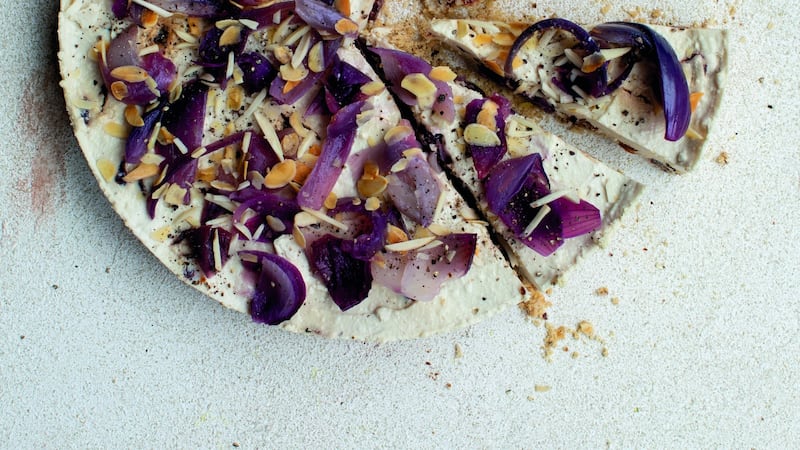On Christmas Day, myself and my wife go our separate ways – she visits her family and I go to my sister's house with my mother. Time off work is short and precious at Christmas so I try to use it wisely and avoid cooking too much. My sister prepares dinner for her family and I usually bring my own.

I was never a big fan of turkey or ham anyway, so I don’t particularly miss it, but I do like the traditional structure of Christmas dinner. I still adhere to this formula: potatoes, vegetables, gravy and some kind of protein-based centrepiece. I guess it evokes a sense of comfort. Non-vegans often ask me why vegans seek out imitation meats and cheeses. I think this stems back to our childhood associations with food. Most vegans became vegan as teenagers or adults but the imprints of the food they grew up eating remain strong.

Being vegan or vegetarian at Christmas is so much easier than it was in the past. People in general are much more understanding and clued into people’s dietary choices and also the reasoning behind why someone would want to refrain from eating a traditional dinner. I find people will make the effort now if they are having guests over to stock up on vegan or vegetarian products. A lot of this is to do with the availability of ingredients: you can walk into any supermarket and find vegan products from faux meats, gravies and cheeses to butters, milks and desserts.
I love comfort food and Christmas for me is all about that: rich, indulgent and satisfying.
For the past few years, I have saved myself some time and chosen dishes from the Cornucopia take-away Christmas menu. Alternatively, when I have the time, I sometimes like to wrap up some prepared seitan in flaky pastry with mushroom duxelles to make a seitan encroute, served on fluffy potato mash with caramelised onions, demi-glace and gingered sprouts.
This year, I am thinking of a savoury ketafi pie with homemade almond feta, spinach and roast banana shallots – or perhaps one of several Christmas-friendly dishes from our new vegan cookbook.
Cornucopia: The Green Cookbook is published by Gill Books (€29.99)
CARAMELISED ONION, CRANBERRY AND OAT CHEESECAKE
Serves 8

This savoury cheesecake is a much-loved regular on Cornucopia’s very popular takeaway pre-order Christmas menu, where it sells out within days. It is usually served chilled but can also be heated through gently (see below). The oat and almond base makes a versatile platform for all sorts of sweet and savoury cheesecakes, should you feel like experimenting.
Ingredients
400g firm tofu
3tsp agar powder (or 3tbsp agar flakes)
80ml refined coconut oil, melted
200g cashews
30g sauerkraut, homemade or shop-bought
3 heaped tbsp nutritional yeast
100g dried cranberries
3 red onions, thinly sliced
1tbsp flaked almonds, toasted in a dry pan
Salt and freshly ground black pepper
Rapeseed oil
For the oat and almond base
150g gluten-free oat flour, milled at home or shop-bought
100g ground almonds
1 heaped tbsp nutritional yeast
1tbsp (10g) ground linseeds
75g full-fat vegan spread, melted
Salt and freshly ground black pepper
You will need
High-speed blender
Parchment-lined 25cm springform tin
Parchment-lined baking tray
Method
Preheat the oven to 180ºC.
To make your base, combine the oat flour, almonds, nutritional yeast, linseeds and seasoning in a large mixing bowl. Stir through the melted vegan spread and mix to incorporate well. Press this mixture into the lined springform tin and top the surface with another circle of parchment to prevent it browning. Bake on the lower shelf of the oven for about 15 minutes. Remove the top layer of parchment and set the base aside.
Meanwhile, blend the tofu with 200ml water until smooth and transfer to a large mixing bowl. Heat another 200ml water in a small pot, add the agar and bring to a rapid boil for about a minute. Transfer to the blender along with the melted coconut oil, cashews, sauerkraut and nutritional yeast, purée until smooth and add to the bowl of puréed tofu. Stir well to combine, add the dried cranberries and season to taste. Pour this mixture onto the cooked base in the tin and set aside to cool and set.
Meanwhile, toss the sliced onions in a little oil on a parchment-lined baking tray and roast in the oven for 15-20 minutes.
Once the base is cool to touch, transfer to the fridge. After about an hour, it will have firmed up enough to top with the cooked red onions and toasted almonds. Leave it for at least four to six hours to set completely before carefully releasing it from the springform tin.
Refrigerate until ready to serve. This keeps well in the fridge for the best part of a week, where its flavour will develop and improve. Serve chilled or alternatively, after two days, it can be reheated gently. To do so, cut the cheesecake into eight wedges, spread these out on a parchment-lined tray and pop into a preheated oven (180ºC) for just five or 10 minutes, but checking after five – if this is over-heated, the filling will melt and fall apart.


















